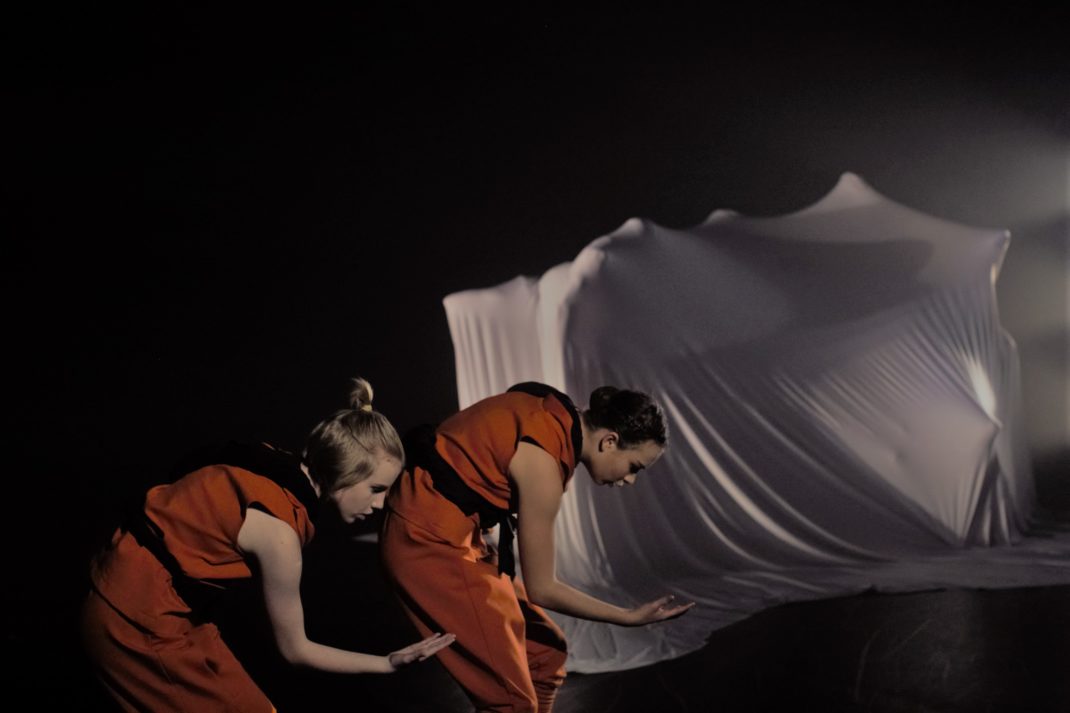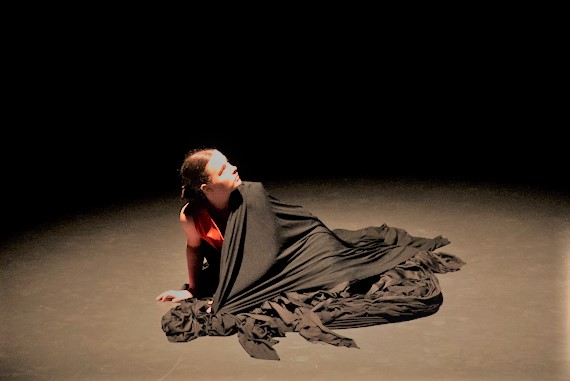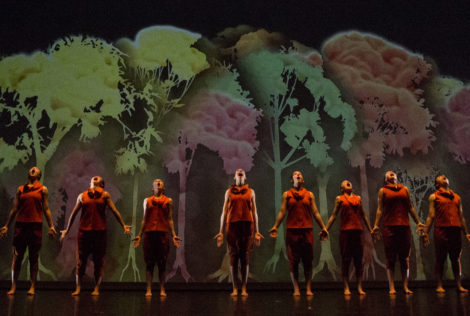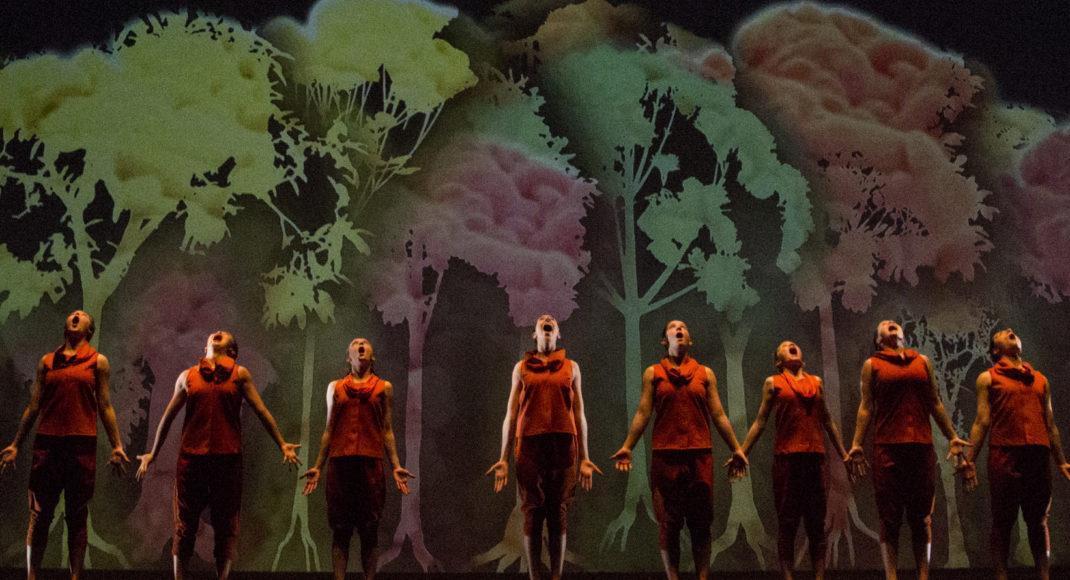27 July 2017, Playhouse, Canberra Theatre Centre
This Poisoned Sea, Quantum Leap’s major show for 2017, took as ‘a launchpad’ (as the media says) Samuel Taylor Coleridge’s epic poem The Rime of the Ancient Mariner. Three choreographers, Claudia Alessi, Eliza Sanders and Jack Ziesing, presented separate sections, which were woven together into an evening length production, without interval, by artistic director Ruth Osborne, and with input from dramaturg Pip Buining. It was an ambitious undertaking.
The focus of the evening was largely on contemporary environmental issues, a focus that comes easily to mind given the subtext of the poem (despite that it was written at the end of the eighteenth century). But in the end we saw several different approaches, especially in terms of how references back to the poem were made.
Claudia Alessi’s work ‘My own private albatross’ made the most obvious statement about environmental issues, and perhaps, too, the most obvious reference to the poem when a voice-over clearly recited lines from the Coleridge work. Alessi’s section, which occupied the middle of the program, concerned the amount of plastic waste and other non-recyclable materials in the sea, and the effects that material is having on, for example, sea creatures. It grew out of the shock and concern Alessi felt at the amount of rubbish in the seas off Christmas Island, where she had recently spent time. The dancers used props frequently, including a long string of plastic bags and other detritus, which they dragged across the stage at various intervals.
Choreographically, however, Alessi’s section was the least interesting of the three for me. I found the movement a little too simplistic and it seemed like an addition, rather than an intrinsic part of the section.
Jack Ziesing’s ‘A hellish thing’ was the last section before Osborne’s finale. With its ongoing references to melting icebergs and black oil spills, it took quite a black view of today’s environmental issues. His work seemed the least concerned with the poem itself and more completely with a twenty-first century perspective.

The oil spills, represented by lengths of black cloth, dominated right up to the end of Ziesing’s section. The dancers draped them around their bodies, sometimes covering themselves entirely, until at the end one dancer found herself alone shrouded in black, apparently sheltering under the very material that is degrading the environment. Ziesing’s choreography was quite powerful and the dancers had some strong group sections, which they performed with gusto.

For me the standout section, however, was that choreographed by Eliza Sanders, which she had entitled ‘The poem is within us’. It followed immediately after Ruth Osborne’s introductory passage as the first section made by the commissioned choreographers. ‘The poem within us’ was subtle. It didn’t try to force us into anything, it didn’t try to be didactic, and it didn’t try to cover too many ideas within one short piece. The enduring image was that of an open mouth—’And every tongue through utter drought,/Was withered at the root’ says the poem. Was it a silent scream? Was it making the comment that the destruction of the environment is not being heard? So many thoughts surfaced.
Choreographically, too, ‘The poem is within us’ wasn’t full of forceful movement, but focused on changing patterns and on building groupings of dancers. The one jarring element was the use of live speech. A few lines of the poem were quoted by one of the dancers, but this is a trap for the unwary I think. It is never easy to hear clearly from certain parts of the auditorium and the voice-over recording that Alessi used was by far the better way to go. But that element aside, Sanders takes an unusual approach to her work and I think she is a choreographer to watch.
There was much to admire about This Poisoned Sea in terms of the collaborative elements. Mark Dyson’s lighting was often spectacular, and I especially liked the black and white floor pattern he conjured up at one stage. Cate Clelland’s costumes were also an excellent addition to the overall work. The pants worn by all the dancers were cut in a subtle way so that they made passing reference to costumes from centuries ago, while the addition of extra elements (the black belts in Ziesing’s work for example) distinguished each section from the others.
This Poisoned Sea was an ambitious undertaking. But it remains in my mind as one of the best shows Quantum Leap has presented. The use of a dramaturg gave the work coherence, and the evening was well structured so that the work moved smoothly from the subtlety and beauty of Sanders, to the obvious from Alessi, to a strong contemporary comment from Ziesing.
Michelle Potter, 30 July 2017
Featured image: Scene from Eliza Sander’s ‘The poem is within us’ from This Poisoned Sea. Quantum Leap, 2017. Photo: © Lorna Sim

